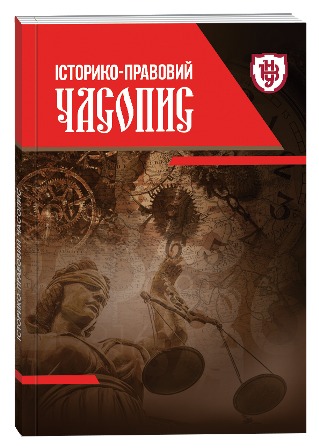“COMPOSITE STATE” AS EUROPEAN MEDIEVAL PHENOMENON
DOI:
https://doi.org/10.32782/2409-4544/2024-1/3Keywords:
composite state, interstate unions, dynastic unions, medieval stateAbstract
The article proposes to introduce the term "composite state" into Ukrainian science of history and theory of state and law. The term has gained recognition and spread among European scientists. The author of this term, as well as of the concept of a composite state, is the British historian of German origin, Helmut Königsberger. He defined a composite state as the result of a union between sovereign political entities of the European Middle Ages. The author has carried out an analysis of the essence and common features of composite state in three conglomerates – the Crown of Aragon, Catalonia and Valencia, the Kingdom of Poland and the Grand Duchy of Lithuania, the Kingdom of Denmark, Norway and Sweden. It was established that the common factor that gave impetus to the conclusion of union treaties between countries in different regions of medieval Europe were crisis situations related to the succession to the throne. However, it is emphasized that the deep reasons that contributed to the search for political alliances and unification into a composite state were the intention to create territorially and therefore militarily powerful states, the struggle against common enemies and competitors, and economic considerations. The general trend of the late Middle Ages in Europe was the overcoming of feudal particularism and the creation of centralized states, one of the kinds of them was the composite state. Its power and period of existence depended on how powerful and viable central institutions it managed to create and how effective their functioning was. Such states were headed by a monarch, and the social base of his power in all composite states was the aristocracy. The guarantee of the loyalty of the aristocracy was the monarch's observance of their rights and privileges. At the same time, the prospects of the composite state were affected by the presence/absence of the middle class in it, which determined the economic development of the state. Composite states were a phenomenon of the European Middle Ages, so they existed for a relatively short time. Over time, they either disintegrated into territorial nation-states (such as Denmark, Sweden, and Norway) or evolved into a territorial state (such as Aragon, Catalonia, and Valencia).
References
Koenigsberger H.G. Monarchies and Parliaments in Early Modern Europe: Dominium Regale or Dominium Politicum et Regale. Theory and Society. 1978. 5 (1). P. 191–217.
Elliot J.H. A Europe of Composite Monarchies. Past & Present. Vol. 137, Issue 1. November, 1992. P. 48–71.
Moller J. Konglomeratstat. Den Store Danske. Lex.dk. Aarhus universitets side. URL: https://denstoredanske.lex.dk/
Goetze D., Rohschneider M. Empires and «Composite States» in Early Modern Times. URL: https://ieg-ego.eu/en/threads/crossroads/political-spaces/dorothee-goetze-michaelrohrschneider-empires-and-composite-states-in-early-modern-times
Srodecki P., Kersken N., Petrauskas R. Unions and Divisions: New Forms of Rule in Medieval and Renaissance Europe. London-New York, NY: Routledge, 2023. 392 p.
Gerhard D. Regionalism and Corporate Order as a Basic Theme of European History. Studies in Diplomatic History: Essays in Memory of David Bayne Horn. Eds. R. Hatton and M.S. Anderson. P. 155–182.
Brisson T. N. The Medieval Crown of Aragon: A Short History. Oxford: Clarendon Press, 2000. 250 p.
Payne S. G. A History of Spain and Portugal. Wisconsin: University of Wisconsin Press, 1973. 712 p.
Chaytor H.J. A History of Aragon and Catalonia. URL: https://archive.org/details/historyofaragonc0000hjch/page/n7/mode/2up
Яковенко Н. Нариси історії середньовічної та ранньомодерної України. К.: Критика, 2005. 584 с.
Норкус З. Непроголошена імперія. Велике князівство Литовське з погляду порівняльно-історичної соціології імперії. Пер. з литовської П. Білинський. К.: Критика, 2016. 440 с.
Lauring P. A History of Denmark. Translated from the Danish by David Hohnen. Copenhagen: Host and Son, 2023. 274 p.
Brengsbo M., Jensen K.V. The Rise and Fall of the Danish Empire. Stokholm-Odense: Palgrave MacMillan, 2022. 284 p.







